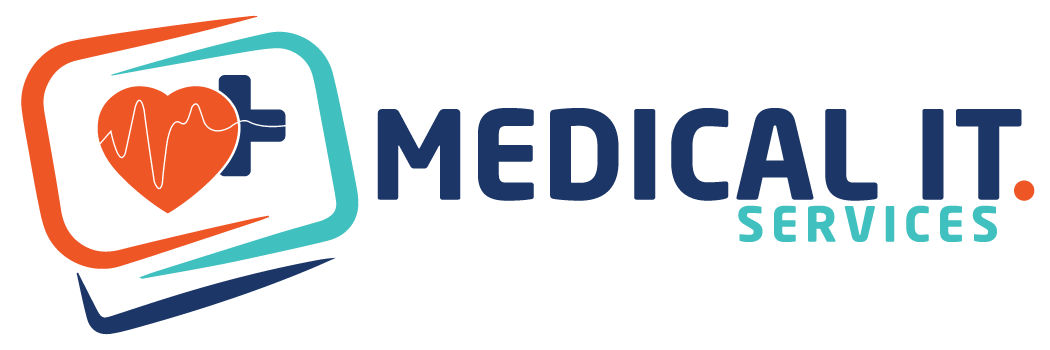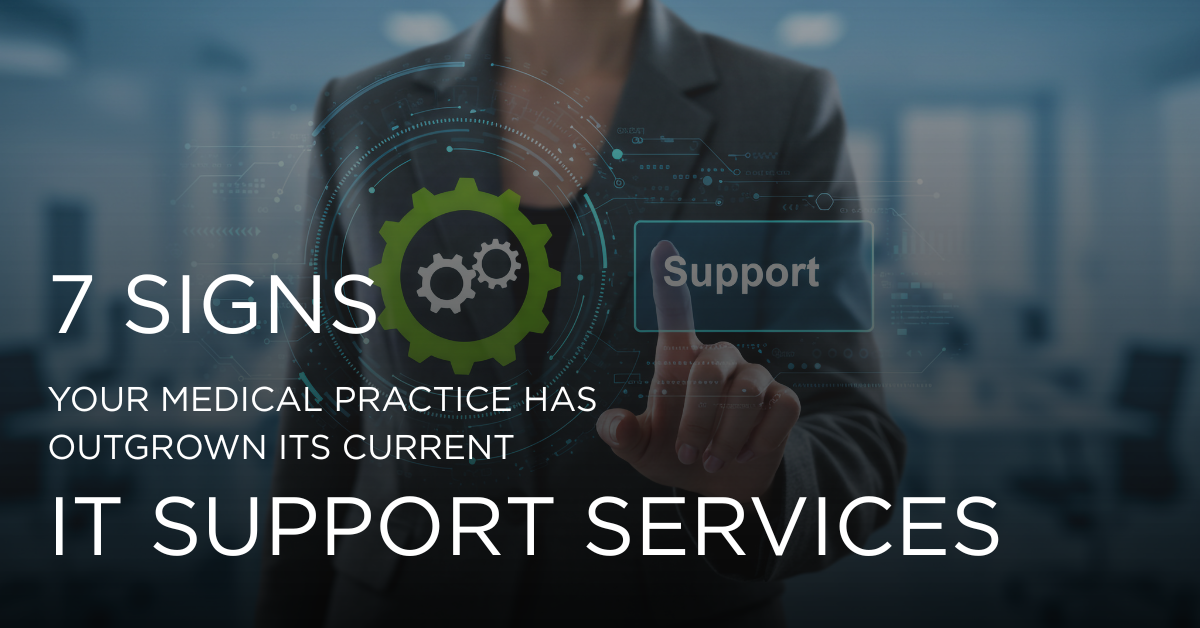Are you starting a new medical clinic that is about to give the best care…

Are Your Employees Stuck on Hold with IT Issues? How a Professional IT Helpdesk Services Acts as Your First Line of Defense
How Professional IT Helpdesk Services Act as Your First Line of Defense
In today’s fast-paced business world, downtime caused by IT issues is more than just an inconvenience—it is an expense. When employees are “stuck on hold” waiting for help—unable to access systems, files, or support—it harms productivity, morale, and customer satisfaction. That is why IT helpdesk services are vital. They act as your first line of defense: fast responders, triage experts, and problem solvers. In this article, you will learn how professional helpdesk services work, why they matter especially for smaller companies, and how they compare with other IT options like remote IT support, managed IT support services, and general small business IT services.
What Are IT Helpdesk Services?
IT helpdesk services are structured systems through which organizations offer support for technical issues. What mostly include in this:
-
Receiving reports of problems or requests from employees, via phone, email, chat, or ticket-system.
-
Logging and categorizing issues (for example: “cannot access network drive,” “software error,” “password reset,” “printer not working,” etc.).
-
Initial diagnosis and triage—determining severity, urgency, possible causes, and whether the issue can be solved immediately or needs escalation.
-
Resolving simple or common issues right away (password resets, basic software configurations, etc.).
-
Escalating more complex issues to specialists or deeper technical teams.
-
Tracking and communicating with employees—letting them know status, estimated time to fix, follow-ups.
-
Documenting resolutions so that problems can be prevented in future, or so similar issues are fixed more quickly.
An effective helpdesk acts very much like first aid in medicine: It handles minor problems fast, stabilizes more serious ones, and knows when to refer to specialists.
Why Are Employees Stuck on Hold Without Proper Helpdesk Support?
Without a strong helpdesk service, many employees encounter delays and frustration. Here are some of the reasons:
-
No clear point of contact – Employees may not know whom to call or when. If IT responsibility is unclear, people waste time figuring out who can help.
-
Overloaded IT staff – In many small companies, a single IT person or a very small team handles many roles (network, hardware, software, security). They are easily overwhelmed, so non-urgent issues pile up.
-
Poor prioritization – Without triage, urgent matters get buried under lots of small, low-priority requests.
-
Long wait times for on-site support – If all issues require someone to visit physically, travel time, scheduling, and logistic delays cause long hold times.
-
Lack of proactive detection – Many problems are not discovered until an employee reports them, rather than being caught early. This leads to repeated breakdowns or disruptions.
Employees stuck waiting means lost hours, damaged morale, possible loss of clients, and a culture of frustration rather than efficiency.
How Professional IT Helpdesk Services Prevent and Solve These Problems
A well-designed helpdesk service, especially one offered by an external provider or as part of managed support, can act as your company’s first line of defense. Below are the ways such services help, particularly for small businesses.
1. Faster Response & Triage
When helpdesk is in place:
-
Employees can report issues immediately via phone, chat, or ticketing system.
-
The helpdesk staff triage issues: is it critical (network down, business stop), important (e.g. many users affected), or minor (single user, low urgency).
-
That means the most urgent problems get addressed first, reducing downtime.
2. Remote IT Support: Speed Without Travel
One of the key tools is remote IT support. With remote support, technicians can access employees’ machines or servers over the Internet to diagnose and resolve problems:
-
This removes travel time. A technician doesn’t physically come on-site for many issues.
-
Response time becomes much shorter. In many cases, issues are fixed in minutes rather than hours or days.
-
Remote support is especially useful for distributed teams, employees working from home, or companies with multiple small sites.
3. Managed IT Support Services: Always Monitoring and Preventing
Helpdesk is often part of broader managed IT support services. These services do more than react:
-
They monitor systems constantly for signs of trouble—servers, networks, security.
-
They perform regular maintenance: updating software, applying patches, checking backup systems, ensuring hardware is running well.
-
They identify weak points (for example, outdated antivirus, weak network security) before they cause failures or breaches.
-
Thus, many issues are prevented rather than just fixed after they surface.
4. Scalability & Flexibility
For small businesses, the volume of IT issues may fluctuate—new employees, new projects, seasonal work, changes in tools.
-
A good helpdesk within managed IT services scales up and down.
-
When demand is high, more staff or resources are applied; when it is quiet, costs stay under control.
-
This flexibility is particularly important for small business IT services because small firms often cannot afford large fixed overheads for IT.
5. Clear Communication & Transparency
Helpdesk systems provide visibility:
-
Employees know when their issue is logged, who is handling it, what the expected resolution time is.
-
IT leaders or managers see metrics: how many tickets, average response time, resolution time, how many escalations, which issues recur.
-
This allows better planning: identifying where additional training is required, which systems are fragile, or where investments are needed.
6. Reduced Cost & Better Budgeting
For many small businesses, hiring full in-house IT staff has high fixed costs—salary, training, tools, benefits. With professional helpdesk as part of remote or managed services:
-
You often pay monthly or per-user fees rather than big upfront investment.
-
Many issues are lower cost when solved remotely; travel, delays, or crises are costly.
-
Predictable costs help with budgeting—knowing what your IT support costs will be helps prevent “surprise bills.”
7. Enhanced Security & Compliance
Helpdesk services are often the frontline soldiers against security threats:
-
Prompt application of security patches and updates.
-
Monitoring for unusual behaviour (malware, unauthorized access).
-
Ensuring backups are working and data recovery is possible.
-
Helping with regulatory compliance: logging, auditing, documentation, policies, etc.
Small businesses especially benefit, because many attacks target firms with weaker defenses.
Small Business IT Support Services: What That Means
When you see the term small business IT support services, it usually includes functions like:
-
Helpdesk as described above.
-
Network setup and management (LAN, Wi-Fi, remote access).
-
Hardware and software procurement, installation, updates.
-
Data backup and disaster recovery.
-
Cybersecurity measures (firewalls, antivirus, encryption, access control).
-
Advice on tools, cloud services, efficiency improvements.
Small business IT services tailor the scale, pricing, and features to smaller organizations—not enterprise-level complexity, but still professional and robust enough to prevent most interruptions.
How it Helpdesk Services Compare with Other IT Models
To understand better, here is a comparison of helpdesk + managed support vs. only ad hoc IT help vs. full internal IT teams.
| Model | Advantages | Drawbacks |
|---|---|---|
| Ad hoc / reactive internal IT (someone fixes things only when broken) | Low upfront cost, simple setup | Long delays, lots of downtime, employee frustration, no planning or prevention, often unbalanced workload |
| Remote IT support plus helpdesk | Fast response, lower cost, remote solves many issues, employees don’t wait for travel delays | Some issues still need on-site; remote service may depend on good internet; less physical oversight of hardware |
| Managed IT support services (including helpdesk + proactive monitoring etc.) | Prevents issues, enhances security, scales well, good reporting, fewer emergencies, predictable cost | Higher cost than purely reactive; need to select good provider; potential dependency on provider; needs good communication |
| Full internal IT team | On-site presence, close control, immediate physical access to hardware | High fixed cost, challenges hiring and retaining staff, sometimes less flexibility, overheads are heavy for small business |
For many small businesses, the sweet spot is combining IT helpdesk services with remote IT support and managed IT support. That gives sufficient speed, prevention, security, and cost control.
When IT Helpdesk Services Acts as First Line
To illustrate, here are a few scenarios showing how helpdesk services play a critical first line role.
Scenario A: Password or Access Problem
Employee cannot log in to a shared system. Instead of waiting for on-site tech, the helpdesk triages, resets the password remotely, checks account permissions, and restores access in minutes. The entire business continues.
Scenario B: Software Update Bug
After an update, a key software crashes. The helpdesk receives multiple reports, identifies a common factor, escalates to managed support team, and arranges a patch roll-out. Meanwhile helpdesk provides temporary workaround so employees can continue.
Scenario C: Security Alert
Helpdesk monitoring detects unusual login from foreign IP address. They escalate, take emergency measures (block access, ask user to change passwords), and notify management. Without helpdesk, the issue could go undetected until data is compromised.
Scenario D: Hardware or Network Outage
Network goes down in one office. Helpdesk receives alert from monitoring, escalates and involves on-site technician. Remote support helps restore connectivity to remote workers. Communication goes out to all staff so they know status. Because issue was caught early and helpdesk managed the flow, impact is controlled.
How to Choose the Right Helpdesk / Small Business IT Support Service
Since having a good helpdesk is crucial, you must pick providers or build an internal helpdesk with care. Here are criteria to consider.
-
Response times and SLAs (Service Level Agreements)
What is the guaranteed time to respond? To resolve? For critical issues? -
Coverage hours
Do they offer 24/7 support or only during business hours? How about after-hours emergencies? -
Remote vs On-Site capacity
Can most problems be solved remotely? When do they send someone physically? -
Proactive monitoring and maintenance
Do they proactively check systems, update software, protect security? Or only respond when things break? -
Scalability
Can they scale with growth of your business? Add users, devices, tools, or new office locations? -
Security expertise
What tools, policies, certifications do they have? How do they protect data, handle compliance? -
Transparency and reporting
Will you get regular reports on what issues occurred, resolution times, recurring problems? Will they communicate with your staff well? -
Cost structure
Is pricing transparent? What is included/excluded (after hours, premium services, etc.)? Is it a flat monthly fee or per ticket? -
Reputation & support quality
Look for reviews, references. Test their customer service. How well do employees interact with them?
Real Benefits You Can Expect of IT Helpdesk Services
Here are measurable and practical benefits that businesses often notice when they invest in professional IT helpdesk services combined with remote and managed support.
-
Reduced downtime — fewer hours where people are waiting because problems are resolved faster and often prevented.
-
Higher employee satisfaction — people feel supported when their problems are addressed quickly; morale improves.
-
Better productivity — more working hours spent on core业务 tasks rather than fighting tech issues or waiting for fixes.
-
Lower overall costs — from cheaper remote fixes, less emergency downtime, fewer major failures, fewer replacements.
-
Stronger security posture — fewer breaches, less exposure, better recovery, less risk of data loss.
-
Predictable IT budgeting — fixed costs or well-defined cost models help avoid surprises.
-
Growth readiness — readiness to add new users, new sites, remote work without the IT structure breaking down.
Challenges & How to Overcome Them
While helpdesk services are powerful, they are not magical. You should know typical challenges and strategies to avoid them.
| Challenge | How to Overcome |
|---|---|
| Over-reliance on provider | Maintain internal knowledge; have clear oversight; periodically review contract and performance. |
| Communication issues | Establish clear communication channels; define escalation paths; regular status updates. |
| Hidden costs | Read contract carefully; ask what is included (after hours, urgent escalations); check pricing for premium services. |
| Poor remote infrastructure | Ensure stable internet; good endpoint security; reliable VPN or remote access tools. |
| Inconsistent service quality | Vet providers; ask for case studies; check references; have KPIs and penalties or incentives tied to performance. |
Making IT Helpdesk Services Your First Line of Defense
If you have decided to build or improve your helpdesk as part of your small business IT services, here are steps to make it effective.
-
Define Scope and Make a Plan
Decide what issues helpdesk will handle vs escalate. Define hours of operation, priorities, SLAs. -
Choose Tools & Technology
Ticketing systems, remote access tools, communication tools, monitoring tools. -
Set Up Remote Support Capabilities
Ensure support staff can access systems securely; endpoints are configured; employees trained to accept remote help. -
Hire or Partner
Either build an internal helpdesk staff or partner with external provider or managed service provider (MSP). -
Implement Proactive Monitoring & Maintenance
Regular checks, patch management, backups. -
Train Employees
Teach staff how to submit tickets, include diagnostic details, follow guidance. Also basic cybersecurity hygiene. -
Establish Reporting and Feedback Loops
Regular reports: number of tickets, time to resolution, recurring problems. Use feedback from employees about satisfaction, delays. -
Review & Improve
Periodically review performance vs goals. Adjust SLAs, staffing, tools, policies as needed.
Conclusion
When employees are stuck waiting on technical issues, it costs your business—sometimes in ways you don’t even notice. A professional IT helpdesk services system serves as your first line of defense: shortening wait times, diagnosing problems early, preventing crises, and freeing your team to focus on what matters. When helpdesk is combined with remote IT support, managed IT support services, and well-designed small business IT services, the result is smoother operations, better security, happier staff, and controlled costs.
If you are a small business or growing enterprise, investing in strong helpdesk capabilities is not just a luxury—it’s a necessity. Your IT systems are part of your backbone. Acting early, structuring well, and choosing good partners will protect your business from many avoidable problems. Don’t let your employees stay on hold. Build that first line of defense now.



